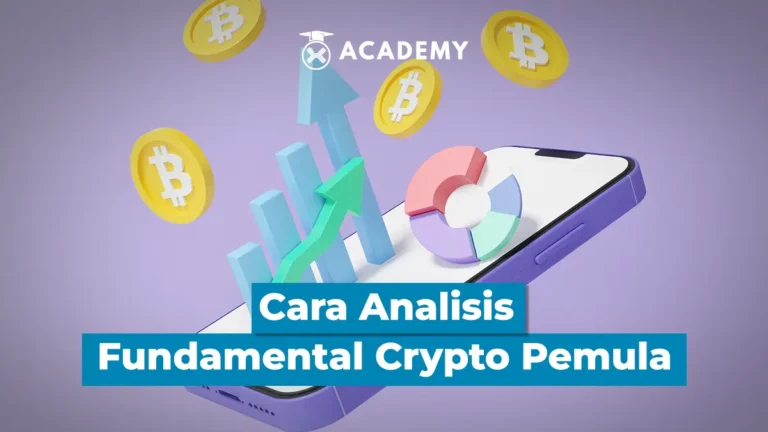For Indodax friends who are used to dealing with banks, you must be familiar with terms such as administration, commission, and provision fees.
You must have encountered it more often when taking a home loan installment or mortgage, especially for the latter.
What exactly is a provision fee? What is the full explanation, and what are the examples?
What is Provision Fee?
Provision fee is a term often used to describe various financial services, such as banking.
A general definition based on the KBBI explanation, a provision fee is “a fee payable for services rendered.”
In financial transactions, a provision fee is a sum of money charged by a financial institution, such as a bank or trading platform, in exchange for their services.
Fees play an important role in the world of financial transactions:
- It is one of the sources of revenue for financial institutions, as it allows them to cover their operational costs and continue to provide the services their customers need.
- Improving service quality allows financial institutions to improve their service quality, such as updating security systems, improving technology, or providing better customer service.
- Fees also help regulate and manage risk. For example, they can be used to control the frequency and volume of transactions, thereby reducing the likelihood of sharp market fluctuations.
Examples of Provision Fees in Everyday Life

To help Indodax friends better understand this concept, here are some examples of provision fees we often encounter daily.
First, marketing commissions are fees paid to agents or third parties who assist in selling products or services.
For example, if you sell a house through a real estate agent for Rp1 billion, the agent will receive a 2% commission or around Rp20 million in return for their services.
The second example, administrative fees, covers various fees that institutions or service providers charge to take care of certain administrations.
As an illustration, some banks charge a monthly fee for managing a savings account of up to Rp15,000 per month, so in a year, you pay Rp180,000 as a provision fee.
Amount of Provision Fee at Various Banks
You need to know, and if necessary, you can also note the current provision fees for various banks in Indonesia.
It should be noted that the amount of this provision fee depends on the financial service product you choose, such as annual fees for credit cards to the cost of administrative or sales fees for investment products. Here is the amount of provision fees in the country:
1. BNI Bank
Bank BNI sets a range of provision fees of around 0.5% to 3% to users of the total credit or loan provided.
2. Bank Mandiri
Next is Bank Mandiri, which sets a provision fee ranging from 1% to 3% to users of the total loan or credit received.
3. BRI Bank
Next is BRI Bank, which charges creditors a provision fee ranging from 1% to 3% of the total loan funds submitted.
4. BCA Finance
Credit services from BCA finance charge provision fees to creditors of car and motorcycle vehicles, which are around 1-3% of the total loan funds. For multipurpose loans, around 2-3% of the total loaned funds are used.
How to Calculate Provision Fee?

Calculating provision fees is an important activity you need to know to manage your finances more regularly and wisely.
Here is a simple guide on how to calculate the provision fee, along with an example calculation:
- The first step is determining the transaction’s total value, which will be subject to the provision fee. For example, if you’re taking out a loan, this transaction value is the loan amount you received.
- The second step is to determine the percentage of the provision fee charged. The financial institution or service provider usually determines this percentage.
- The last step is calculating the provision fee and multiplying the transaction value by the provision percentage. The formula is:
Provision Fee = Transaction Value × Provision Percentage
Example of How to Calculate Provision Fee
Let’s look at a concrete example to make understanding the cost of Rp100 million Credit easier with a 1% Provision.
- Transaction Value: let’s say you take a loan of Rp100 million.
- Percentage of Provision: financial institutions charge a provision fee of 1%.
- Calculating the Provision Fee using the formula above, we can calculate the provision fee as follows:
Provision Fee = Rp100,000,000×1%, then the result is Rp 1 Million.
Differences Between Provision vs Commission
For those of you familiar with the banking world, you will often come across the word administration. So, what is the difference between administration and provisions?
Definition Provisions are fees financial institutions and service providers charge in exchange for their services.
Provision is often used in financial transactions such as loans, stock purchases, or crypto asset trading.
These fees are usually calculated as a percentage of the transaction value.
Commission definition is a fee paid to a third party, such as an agent or intermediary, for the services they provide in assisting with a transaction or sale.
This commission is usually calculated as a percentage of the transaction value or the amount of goods and services sold in a certain period.
The key differences between fees and commissions are who receives the payment and in what context the payment is made.
Here are the main differences between the two:
-
Payee
- Commission: A third party, such as an agent or intermediary, receives commission payments.
- Fees: A provision payment is received by a financial institution or service provider.
-
Payment Context
- Fees: A provision is charged as a fee for a service or services a financial institution provides to a customer.
- Commission: Commissions are paid to agents or intermediaries for their assistance or services in making transactions or sales.
Use Case
- Provision: For example, when you take a loan from a bank, the bank may charge a provision fee in return for its services in preparing and disbursing the loan funds.
- Commission: For example, when you sell a property or house through a real estate agent, the agent will receive a commission as compensation for helping you sell the property to a buyer.
Difference between Provision Fee and Administration Fee
Although mentioned above, it’s worth noting that a provision fee is a budget charged by a financial institution or service provider in exchange for services rendered.
It is usually calculated as a percentage of the transaction value or loan amount.
Common examples of provisioning fees are fees charged when taking out a loan or making a stock or crypto asset trading transaction.
Administrative fees are fees financial institutions or service providers charge to cover the costs of managing and operating the service.
Examples of these fees can be fixed fees charged regularly, such as monthly or annual fees for managing bank accounts for credit card users.
It can also be a one-time fee for certain administrative processes such as account registration or closure or at specific moments related to account or service management.
So, how do they differ in the type of service provided?
Regarding function and purpose, fees aim to reward a specific service or services the financial institution provides, such as lending or trade facilitation.
Administrative fees, on the other hand, aim to cover the costs of operating and managing more general services such as account management fees or system maintenance fees.
Tips to Get Free Provision Fees
For those of you who have reservations about paying fees, here are some ways to get fees for free.
- You can keep updated with the latest information from banks, for example, through their social media and by visiting the banking website regularly.
- Banks tend to provide benefits more often for customers who have a stable salary or business.
- Banks often offer special offers to customers in the productive age range (21-51 years old) because they are considered financially active and have great potential to use various bank service products.
Free Provision Fee Policy
You might be thinking, why do financial institutions like banks still charge provision & administration fees to service users?
Who is this provision fee for? Will this provision fee be returned later?
It is not uncommon for financial services to also offer a free provision fee policy. What does this mean?
So, a free provision fee policy is a policy in which a financial institution does not charge a provision fee for certain services.
This policy is often applied through promotions or special offers for certain periods or transactions.
The main objective of this policy is to attract more customers and increase transaction volume.
For example, to increase the number of customers and transaction volume to build customer loyalty.
Conclusion
Fees are an important part of financial transactions that every customer needs to understand. Understanding the importance of fees can help you plan and manage your finances better.
Understanding provision fees also helps you choose the right financial product or service and optimize the efficiency of your financial transactions.
Fees significantly impact various financial aspects, especially in credit applications and financial transactions.
Some of the impacts you can feel include an increase in credit payments, a reduction in the value of investments, and an influence on every transaction decision.
Therefore, there is a need for strategies to manage and reduce the cost of fees, which is an important step to maintaining your financial health, among others:
- Make comparisons between financial service providers to find low fees
- Take advantage of promotions such as fee waivers to save money.
- Use accounts with special services, such as premium services, which generally have a provision-free policy
- Stay up-to-date with the latest information on your financial services, as this can reduce your provision fee burden.
- Consider the frequency of transactions that incur high fees.
Invest in Crypto Assets Easily, Safely & Profitably on INDODAX
Of course, you understand more about what provisions are from A to Z in more detail and depth, which are still related to financial services, such as when you trade crypto assets.
Speaking of crypto, there are things you need to remember! Always prioritize self-education by reading trusted references in articles about crypto and blockchain from the Crypto Academy only on Indodax Academy.
If you are interested in investing in crypto in a practical, safe, and profitable way, from buying bitcoin to buying ethereum to buying other crypto assets, you can do it on the INDODAX Market trading platform.
INDODAX is one of the leading and most trusted crypto asset trading platforms in Indonesia. As a pioneer in the country’s crypto asset trading, INDODAX is committed to providing investors with easy access to the crypto asset market.
However, it is important to remember that, like any other type of investment, investing in crypto assets also has risks. These risks are related to the fluctuating value and high level of volatility of crypto assets. Therefore, you need to consider these risks before making an investment decision.
Reading more about various kinds of knowledge references, including financial matters, aims to maximize one’s financial potential, right?
So what are you waiting for? Let’s immediately invest in crypto assets easily, safely, and profitably on INDODAX as a platform that will benefit future assets.





 Polkadot 9.04%
Polkadot 9.04%
 BNB 0.45%
BNB 0.45%
 Solana 4.76%
Solana 4.76%
 Ethereum 2.37%
Ethereum 2.37%
 Cardano 1.75%
Cardano 1.75%
 Polygon Ecosystem Token 2.16%
Polygon Ecosystem Token 2.16%
 Tron 2.85%
Tron 2.85%
 Market
Market


